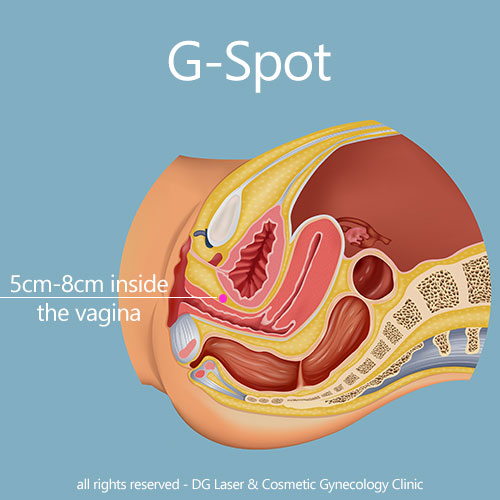1. Introduction
Understanding Female Sexuality
Female sexuality is complex, diverse, and deeply rooted in both physical and emotional experiences. Throughout history, women’s sexual pleasure has been misunderstood or even neglected, which has led to a lack of comprehensive education about it. However, modern understanding is evolving, and today, we know that a fulfilling sexual experience requires more than just physical stimulation. It’s about emotional connection, comfort, and understanding one’s own body.
For many, sexual pleasure isn’t just about reaching orgasm but about the journey of pleasure itself. Vaginal orgasms, in particular, have been the subject of both fascination and debate. While some women experience vaginal orgasms relatively easily, others may find it elusive, which is completely normal.
In this guide, we will focus on exploring the vaginal orgasm, specifically through techniques that involve vaginal and G-spot stimulation, alongside the emotional and mental aspects of sexual fulfillment. Understanding how the body responds, communicating openly with a partner, and being in tune with one’s own desires are essential components of achieving any type of orgasm, including vaginal orgasms.
Clitoral vs. Vaginal Orgasms

Orgasms are not a one-size-fits-all experience. Many women achieve orgasm primarily through clitoral stimulation, which is rich in nerve endings and provides intense pleasure. Vaginal orgasms, on the other hand, often require deeper penetration or focused stimulation of the G-spot, a sensitive area located on the front wall of the vagina. Some women experience blended orgasms, which involve both clitoral and vaginal stimulation.
Understanding the difference between clitoral and vaginal orgasms helps set realistic expectations. For some women, vaginal orgasms come easily, while others may not experience them at all. Regardless, sexual pleasure should be celebrated in all forms.
2. Anatomy of Female Sexual Pleasure
The Clitoris, Vagina, and G-Spot
To understand vaginal orgasms, it’s essential to explore the female anatomy. The clitoris is often regarded as the powerhouse of female pleasure, with over 8,000 nerve endings packed into a small area. However, vaginal pleasure is also significant for many women. The vagina itself is rich with sensitive areas that respond to stimulation, particularly the G-spot, a sensitive area located about 2-3 inches inside the vagina on the front wall.

The G-spot has been a topic of debate for years. Some women claim to experience intense pleasure when it is stimulated, while others do not find it to be particularly sensitive. The reason behind this varies from person to person, as every woman’s anatomy is unique. Stimulating the G-spot, however, can be one pathway to achieving vaginal orgasm.
- Clitoral Orgasms: These are the most common type of orgasm for women, resulting from external stimulation of the clitoris. The clitoris’ primary purpose is to provide sexual pleasure, and for many women, this is the most effective way to reach orgasm.
- Vaginal Orgasms: These occur from internal stimulation of the vagina, particularly focusing on the G-spot. Vaginal orgasms are typically less intense than clitoral orgasms but can last longer and create a deeper, fuller sensation.
Physiological Responses During Arousal and Orgasm
When a woman becomes aroused, several physiological responses occur in her body that prime her for orgasm. Increased blood flow to the genital area makes the vagina swell and become lubricated, and the pelvic muscles tense. These reactions prepare the body for the release that comes with orgasm, a climax involving rhythmic contractions of the pelvic muscles.
The “orgasmic platform” refers to the engorgement of tissues and muscles in the outer third of the vagina, which is responsible for the muscular contractions felt during orgasm. In vaginal orgasms, these contractions may be felt more deeply within the vaginal canal and can be accompanied by a sense of fullness or pleasure that radiates throughout the body.
3. The Path to Vaginal Orgasm
Foreplay and Building Arousal
Foreplay is an essential part of building arousal for many women. It helps set the stage for deeper pleasure by increasing blood flow to the genital area and heightening sensitivity. Foreplay includes not only physical touch but also emotional and mental stimulation. Romantic gestures, words of affirmation, and sensual touch can all contribute to a woman feeling desired and aroused.

- Physical Foreplay: This can include kissing, caressing, oral sex, or manual stimulation of the clitoris, vagina, or other erogenous zones. The goal of physical foreplay is to relax the body and prepare it for penetration or more intense stimulation.
- Mental Foreplay: Many women are aroused by emotional intimacy, verbal communication, and feelings of love and trust with their partner. Talking about desires and fantasies can also build anticipation and excitement.
Techniques for G-Spot Stimulation
The G-spot can be stimulated during vaginal penetration, either with fingers, a penis, or a sex toy. To locate the G-spot, insert one or two fingers into the vagina and curl them upward toward the belly button. The area will feel slightly rougher or more textured than the surrounding vaginal walls. Applying gentle, consistent pressure to the G-spot can produce intense pleasure for some women, leading to vaginal orgasm.
- Manual Stimulation: Use fingers to apply steady pressure and a “come hither” motion to the G-spot. Pair this with external clitoral stimulation for a more intense experience.
- Sexual Positions: Certain sexual positions provide better access to the G-spot. The woman-on-top position allows for deeper penetration and gives the woman control over the angle and depth, making it easier to stimulate the G-spot. Other positions like doggy style or missionary with a pillow under the hips can also increase the chances of stimulating the G-spot.
4. Common Challenges to Achieving Vaginal Orgasm
Psychological Barriers
One of the biggest challenges to achieving vaginal orgasm can be psychological. Many women experience performance anxiety, fear of judgment, or past trauma, all of which can block the path to orgasm. It’s essential to create a safe, comfortable environment where a woman feels free to explore her pleasure without pressure.

Techniques like mindfulness, meditation, and open communication with a partner can help alleviate psychological barriers. Learning to let go of expectations and simply enjoying the sensations of the moment is crucial.
- Performance Anxiety: This can occur when there’s pressure to achieve orgasm or please a partner. It’s important to focus on pleasure rather than a specific outcome.
- Body Image Issues: Some women may feel self-conscious during sex, which can inhibit their ability to relax and enjoy the experience.
Physical Challenges
There are also physical challenges that may affect a woman’s ability to experience vaginal orgasms. Vaginal dryness, tightness, or medical conditions like vaginismus (involuntary tightening of the vaginal muscles) can make penetration uncomfortable or painful.
- Vaginal Dryness: Using a high-quality water-based lubricant can help alleviate discomfort during penetration.
- Pelvic Floor Health: Strengthening the pelvic floor muscles through Kegel exercises can enhance vaginal sensitivity and increase the likelihood of orgasm.
5. The Role of Communication and Emotional Connection
Building Trust and Open Communication
Good communication is key to any sexual relationship, particularly when it comes to achieving orgasm. Couples who openly discuss their likes, dislikes, and desires are more likely to have a fulfilling sex life. Being able to express what feels good during sex can help both partners adjust their techniques and create a more satisfying experience.
- Verbal Cues: Encouraging open conversations about sexual preferences.
- Non-Verbal Communication: Understanding body language and physical reactions during sex.

Emotional Intimacy and Its Role in Orgasm
For many women, emotional intimacy is just as important as physical stimulation when it comes to reaching orgasm. Feeling loved, valued, and understood by a partner can deepen the emotional connection, making it easier to relax and fully enjoy the sexual experience. Emotional vulnerability allows for deeper trust, which can translate into more profound physical pleasure.
6. Exploring Different Sexual Positions and Techniques

Different sexual positions can help facilitate vaginal orgasm by allowing for deeper penetration and better access to the G-spot. Here are some of the best positions to try:
- Cowgirl (Woman on Top): This position allows the woman to control the angle and depth of penetration, making it easier to stimulate the G-spot.
- Doggy Style: In this position, the man enters the woman from behind, which can provide direct stimulation to the G-spot.
- Missionary with a Pillow Under the Hips: Elevating the hips can change the angle of penetration, making it easier to reach the G-spot.
- Spooning: A more intimate position that allows for slow, deep penetration and easy access to the clitoris.
Each woman is different, so experimentation with different positions is key to discovering what works best.
7. Masturbation and Solo Exploration

The Importance of Self-Discovery
Many women find that masturbation helps them understand their own bodies better, which in turn can enhance their sexual experiences with a partner. Masturbation allows women to explore what kinds of touch and pressure feel best and gives them the opportunity to practice techniques that lead to orgasm.
- Techniques for Vaginal Stimulation: Using fingers or toys to stimulate the G-spot during solo play can help women understand how to achieve vaginal orgasms.
- **Clitoral and Vaginal Stimulation together**: Combining clitoral and vaginal stimulation can lead to a blended orgasm, which many women find highly pleasurable. This can be done manually or with the use of sex toys designed to stimulate both areas simultaneously.
Using Toys to Enhance Vaginal Orgasms
Sex toys can be a great tool for enhancing sexual pleasure, either during solo play or with a partner. G-spot vibrators, dildos, and dual-stimulation toys (which stimulate both the clitoris and the G-spot) are designed to increase pleasure and make vaginal orgasms easier to achieve.
- G-Spot Vibrators: These toys are curved to specifically target the G-spot, providing direct pressure and vibrations to the area.
- Dual-Stimulation Toys: These toys are designed to stimulate the clitoris and G-spot at the same time, offering an enhanced experience that may lead to more intense or blended orgasms.
- Dildos: Simple dildos, especially those designed with a slight curve, can be used to stimulate the G-spot during penetration.
Using sex toys can also take the pressure off a partner and allow both individuals to focus more on the pleasurable sensations and less on the mechanics of orgasm.
8. Conclusion

Celebrating Sexual Diversity
Every woman’s sexual experience is unique. Some women may find vaginal orgasms easy to achieve, while others may never experience one. Both experiences are valid, and no form of sexual pleasure is superior to another. Whether a woman achieves orgasm through clitoral stimulation, vaginal stimulation, or a combination of both, the goal is to enjoy the journey of pleasure rather than focusing solely on the destination.
Sexuality is deeply personal, and there is no “right” or “wrong” way to experience pleasure. The key is open communication, experimentation, and a willingness to explore one’s body and desires. The path to vaginal orgasm, like all aspects of sexual pleasure, requires patience, understanding, and a deep connection with oneself and one’s partner.
Encouraging Continued Exploration
Sexual exploration is a lifelong journey. Partners should feel encouraged to continue experimenting with different techniques, positions, and forms of stimulation to find what works best for them. As women’s bodies change over time, so too can their sexual responses, meaning that continual exploration can help keep a sexual relationship exciting and fulfilling.
It’s important to remember that sexual pleasure is a shared experience, and both partners should enjoy the process of discovery together. By building emotional intimacy, engaging in open communication, and exploring new techniques, couples can enhance their sexual connection and increase the likelihood of experiencing vaginal orgasms—or whatever form of orgasm brings them the most pleasure.
In the end, the “golden technique” of vaginal orgasm is not a single, magical method but a combination of understanding, communication, and experimentation. The more a woman knows her body and shares that knowledge with her partner, the more fulfilling her sexual experiences can become.
Final Thoughts
Sexual health and pleasure are essential aspects of overall well-being. Learning about one’s body, communicating openly with a partner, and exploring new forms of pleasure are all important parts of a healthy sexual relationship. Whether or not a woman experiences vaginal orgasms, what truly matters is that she feels satisfied and empowered in her sexual life.
As with all things related to sexuality, patience and practice are key. Vaginal orgasms may take time to achieve, but with the right techniques, emotional connection, and a sense of curiosity, the journey can be deeply pleasurable and rewarding.


